Operation Mahadev Overview
On July 28, 2025, Indian security forces launched Operation Mahadev in the Harwan area near Dachigam National Park, Srinagar, neutralizing three Lashkar-e-Taiba (LeT) terrorists in a joint operation involving the Indian Army’s Chinar Corps, Jammu and Kashmir Police, and CRPF. This operation, prompted by intelligence inputs, targeted militants suspected of links to the April 22, 2025, Pahalgam attack that killed 26 civilians.
The operation reflects India’s ongoing CI/CT efforts in Jammu and Kashmir (J&K), a region plagued by insurgency since 1989.
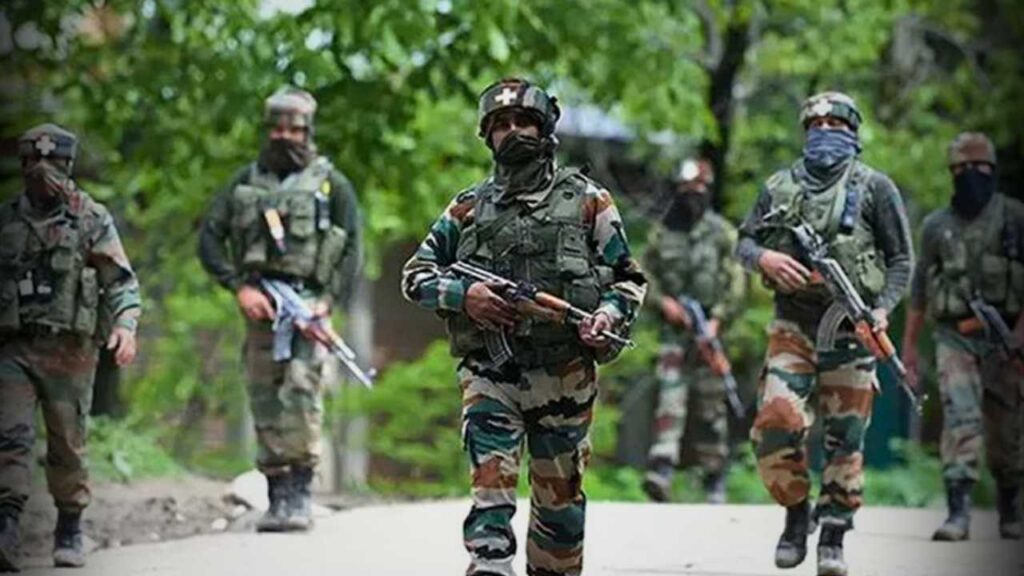
Cost of Security in Kashmir
The financial burden of maintaining security in J&K is substantial. India’s annual expenditure on CI/CT operations in the region is estimated at approximately US$1.46 billion (₹730 crore), covering military, paramilitary, and police operations, intelligence gathering, and infrastructure maintenance. This contrasts with Pakistan’s estimated US$5 million annual spending to sustain militancy in Kashmir, highlighting the asymmetry where every dollar spent on terrorism requires exponentially higher counter-investment.
Additional costs include:
- Manpower: Deployment of over 500,000 security personnel, including the Indian Army, CRPF, BSF, and J&K Police, with salaries, training, and equipment.
- Logistics and Infrastructure: Maintenance of bases, border fencing, and surveillance systems along the Line of Control (LoC).
- Development Programs: Initiatives like Operation Sadbhavana (₹450 crore spent by 2020) for infrastructure, education, and community engagement to counter radicalization.
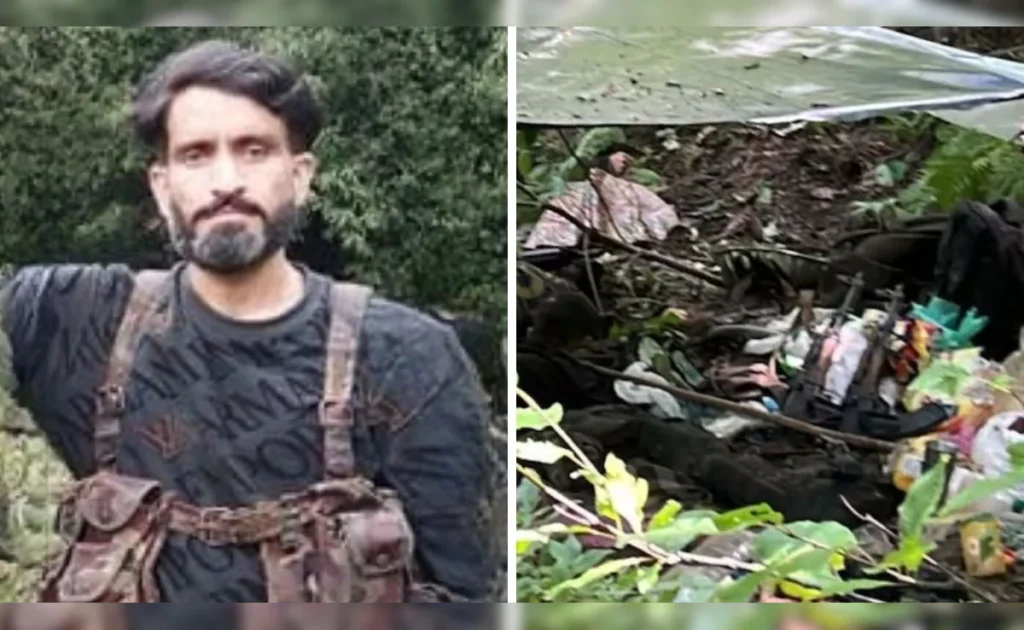
Since 2019, post the revocation of J&K’s special status, intensified operations have increased costs, with a focus on dismantling terror networks, including Over Ground Workers (OGWs) and logistical support systems.
The economic toll also includes indirect costs like tourism losses and disrupted local economies due to unrest.
Financial Analysis of CI/CT Operations
The high cost of CI/CT operations stems from:
- Asymmetric Warfare: Terrorist groups operate with low-cost tactics (e.g., small arms, IEDs), while India deploys resource-intensive measures like large-scale troop deployments and advanced technology.
- Long-Term Engagement: The insurgency, ongoing since 1989, has resulted in over 41,000 deaths (14,000 civilians, 5,000 security personnel, 22,000 militants as of 2017), necessitating sustained investment.
- Opportunity Costs: Funds allocated to security divert resources from development, exacerbating local grievances that fuel militancy.
- External Funding: Militant groups like LeT and Jaish-e-Mohammed (JeM) receive external support, estimated at US$70-80 million annually, primarily from Pakistan’s ISI, with additional funds from narco-terrorism and hawala networks.
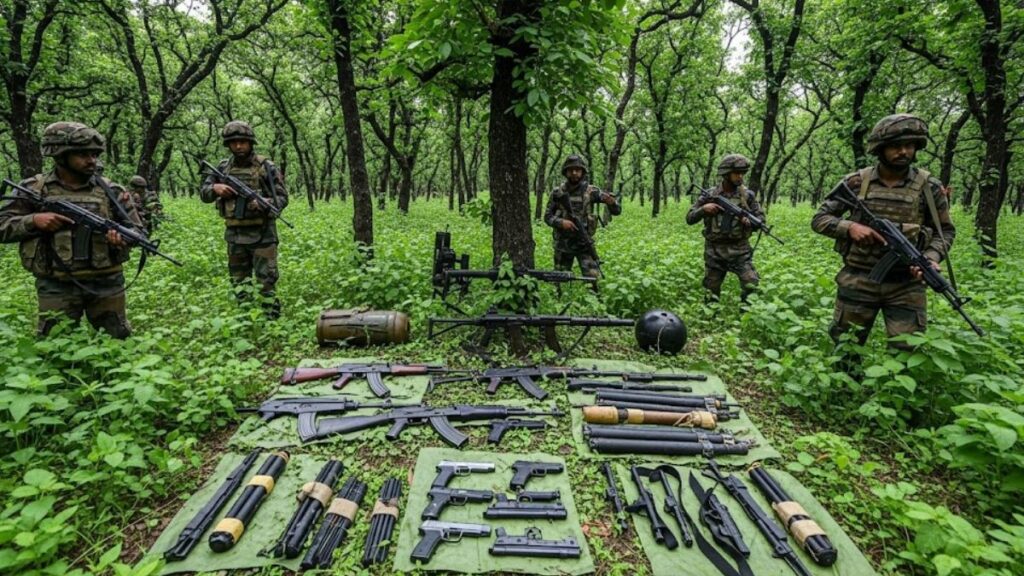
Despite high costs, operations like Mahadev and All Out (2017) have reduced violence since 2004, with structural breaks in violence levels between 2003-2007 attributed to combined security and development efforts.
Tools Used in CI/CT Operations
- Conventional Tools:
- Small arms, sniper rifles, and night-vision devices for close-quarters combat.
- Drones and UAVs for surveillance, as seen in Operation Mahadev for tracking militants in rugged terrains like Dachigam.
- Armored vehicles and fortified border posts to counter infiltration.
- Intelligence networks leveraging human intelligence (HUMINT) and signals intelligence (SIGINT).
- Specialized Units: Rashtriya Rifles, a dedicated COIN force, and 9 Para-SF for operations like Sarp Vinash (2003), which targeted militant hideouts in Pir Panjal.
- Legislative Framework: Armed Forces Special Powers Act (AFSPA) enables proactive operations, though controversial for human rights concerns.
Rashtriya Rifles: Formation and Role
The Rashtriya Rifles (RR), India’s premier counter-insurgency force, was established on October 1, 1990, under the leadership of then-Chief of Army Staff General S.F. Rodrigues, with Lieutenant General P.C. Mankotia as its first Director General. Conceived to address escalating militancy in J&K and Punjab, the RR was initially formed by reconstituting two Indian Army corps, totaling about 75,000 troops. Six battalions were raised, with three deployed in Punjab to counter the Khalistan insurgency and three in J&K. Under General B.C. Joshi, the force expanded significantly, reaching 36 battalions by 1994, and later all battalions were repositioned to J&K for low-intensity conflict operations.
The RR operates under the Ministry of Defence, with its headquarters now at Northern Command in Udhampur, led by an Additional Director General (Major General rank). Comprising 65 battalions across five Counter Insurgency Force (CIF) headquarters—Victor Force (Anantnag, Pulwama), Kilo Force (Kupwara, Baramulla), Delta Force (Doda), Romeo Force (Poonch, Rajouri), and Uniform Force (Udhampur)—the RR draws personnel on deputation from various Indian Army regiments, including infantry (50%), services (10%), and other arms (40%).
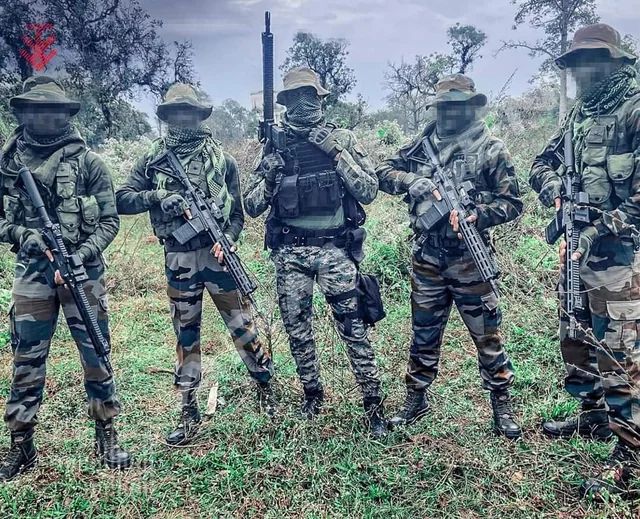
Its motto, “Dridhta aur Virta” (Strength and Bravery), reflects its ethos, and it operates under the Armed Forces (Jammu and Kashmir) Special Powers Act, 1990 (AFSPA). The RR’s unique structure, blending regular army personnel with specialized CI training, has made it a formidable force, neutralizing over 16,368 terrorists (8,522 killed, 6,737 apprehended, 1,109 surrendered) as of 2015.
Notable Rashtriya Rifles Kills
The RR has been instrumental in neutralizing high-profile militants, significantly disrupting terror networks in J&K. Key operations include:
- Operation Sarp Vinash (2003): Conducted in South Kashmir’s Pir Panjal range, this operation targeted heavily armed militant camps, eliminating dozens of terrorists and disrupting their logistical networks.
- Sameer Tiger (2018): The 44 RR, led by Major Rohit Shukla, neutralized Sameer Tiger, a prominent Hizbul Mujahideen commander, in Drabgam, Pulwama, showcasing precision and bravery.
- Kupwara Operation (1996): Lieutenant Colonel Rana of 13 RR destroyed four well-fortified terrorist hideouts in Haphruda forest, Kupwara, killing two foreign mercenaries in a swift strike, recovering 800 kg of explosives.
- Operation Shikanja (2023): RR troops in Machhal, Kupwara, eliminated five terrorists attempting to infiltrate across the Line of Control, recovering five AK rifles and other war-like stores.
- Kupwara Operation (2016): Lieutenant Colonel Atul Gupta of 30 RR singlehandedly eliminated two terrorists in Kupwara, earning the Shaurya Chakra for his valor.
The RR’s effectiveness is reflected in its accolades: 6 Ashok Chakras, 34 Kirti Chakras, 221 Shaurya Chakras, and 1,508 Sena Medals, making it one of the most decorated branches of the Indian Army.
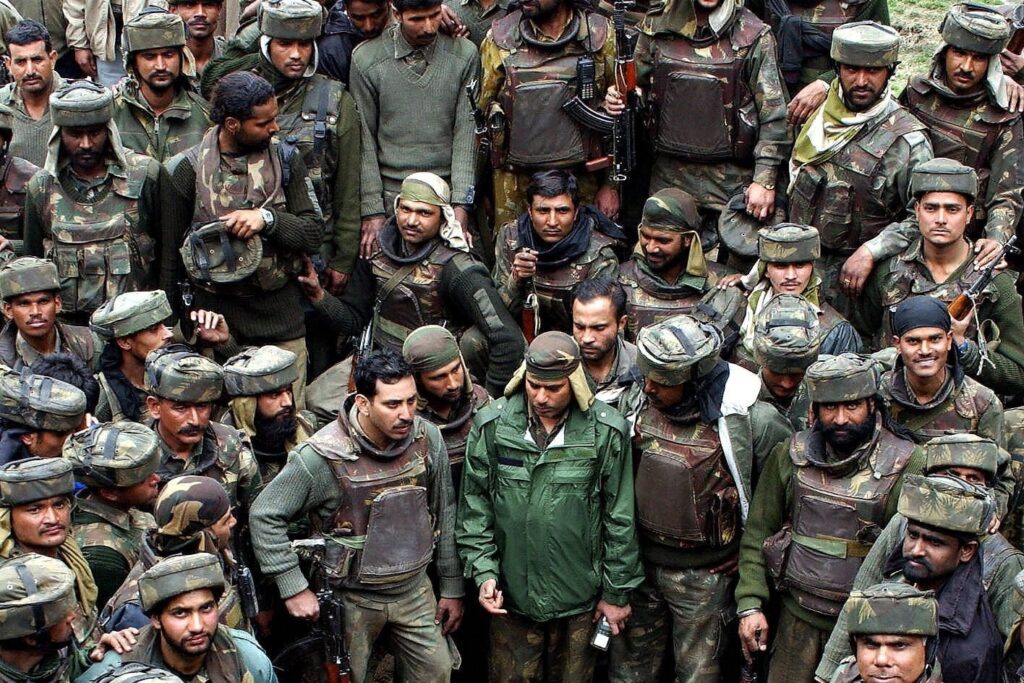
Standard Issue Weapons of a Rashtriya Rifles Soldier
RR soldiers, optimized for counter-insurgency in J&K’s rugged terrain, are equipped with weapons suited for close-quarters combat and high-intensity operations. Unlike regular infantry, who primarily used the INSAS rifle, RR units favor the AK-47 and its variants for reliability in adverse conditions. Standard issue weapons include:
- Primary Weapon: AK-47 or AK-203 (7.62x39mm). The AK-47, sourced from Bulgaria or Russia, is preferred for its durability and stopping power in CI/CT operations. The AK-203, a modernized variant, is being phased in via a 2019 India-Russia joint venture, with 27,000 delivered by December 2023 and 8,000 more by May 2024.
- Secondary Weapon: 9mm Pistol Auto 1A (Browning Hi-Power copy, manufactured by Ordnance Factory Board). Used for close-quarters self-defense.
- Additional Firearms:
- SIG Sauer 716 G2 (7.62x51mm NATO), issued to select RR units for enhanced range and accuracy (72,000 units delivered in 2019, another 72,000 in 2021).
- INSAS 1B1 (5.56x45mm NATO), used as a secondary or reserve weapon, though being phased out due to reliability issues.
- Heckler & Koch MP5 (9x19mm Parabellum), for specialized units in close-quarters combat.
- Support Weapons:
- Under Barrel Grenade Launcher (UBGL) for INSAS/AK-203, firing 40mm grenades.
- Bayonet for close combat, compatible with AK-47/203 and INSAS.
- Optics and Accessories: Night-vision devices, red-dot sights, and Picatinny rails for AK-203/SIG Sauer rifles to mount optics or grenade launchers.
The RR’s preference for 7.62mm weapons reflects the need for greater lethality in counter-terrorism, where neutralizing threats quickly is critical, unlike the 5.56mm INSAS’s focus on incapacitation.
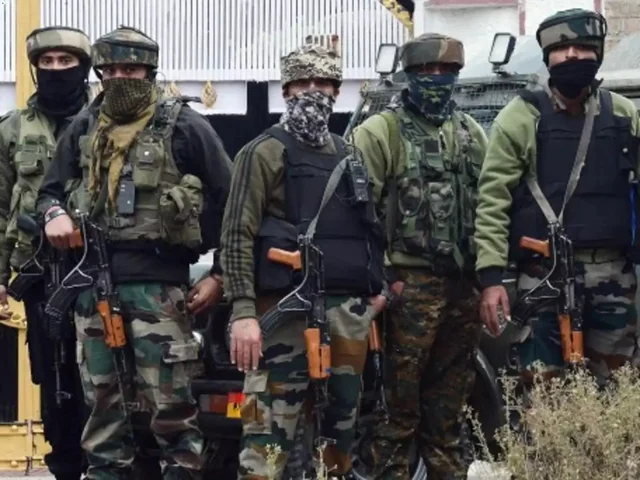
Total Cost to Equip One Indian Army Soldier (Including RR)
Equipping an Indian Army soldier, including RR personnel, involves small arms, personal gear, and protective equipment. Below is an estimated breakdown based on available data and reasonable assumptions:
- Primary Weapon:
- AK-47 (Bulgarian, 2011 price): $263 (₹22,000).
- AK-203 (modernized, estimated): $600-$800, factoring in joint venture production costs at Korwa Ordnance Factory. Assume $700 for calculation.
- Secondary Weapon: 9mm Pistol Auto 1A: $200 (indigenous production lowers costs).
- Ammunition:
- 7.62x39mm (AK-47/203): $0.30/round, assuming 500 rounds annually per soldier: $150.
- 9mm Parabellum: $0.20/round, 100 rounds: $20.
- Grenades and UBGL:
- Hand grenades (fragmentation/stun): $15 each, 10 per soldier: $150.
- 40mm UBGL rounds: $25 each, 5 rounds: $125.
- Protective Gear:
- Ballistic helmet (indigenous, 2019 procurement): $120.
- Bulletproof vest (SMPP Pvt Ltd, 2018): $250.
- Optics and Accessories:
- Night-vision device (basic, indigenous): $1,000.
- Red-dot sight for AK-203/SIG Sauer: $300.
- Uniform and Gear: Combat uniform, boots, webbing, backpack: $200.
- Miscellaneous: Bayonet ($30), cleaning kits ($20), training equipment ($50): $100.
- Total Estimated Cost per Soldier: $2,015 (AK-47) to $2,452 (AK-203), averaging ~$2,200.
- Note: Costs vary by unit (e.g., RR vs. regular infantry) and mission. Special forces use pricier weapons like the SIG Sauer 716 ($1,500-$2,000) or Tavor ($2,000), pushing costs to $3,000-$4,000 per soldier. Bulk procurement and indigenous production (e.g., AK-203 at Korwa) reduce costs, but imported accessories (e.g., optics) increase expenses
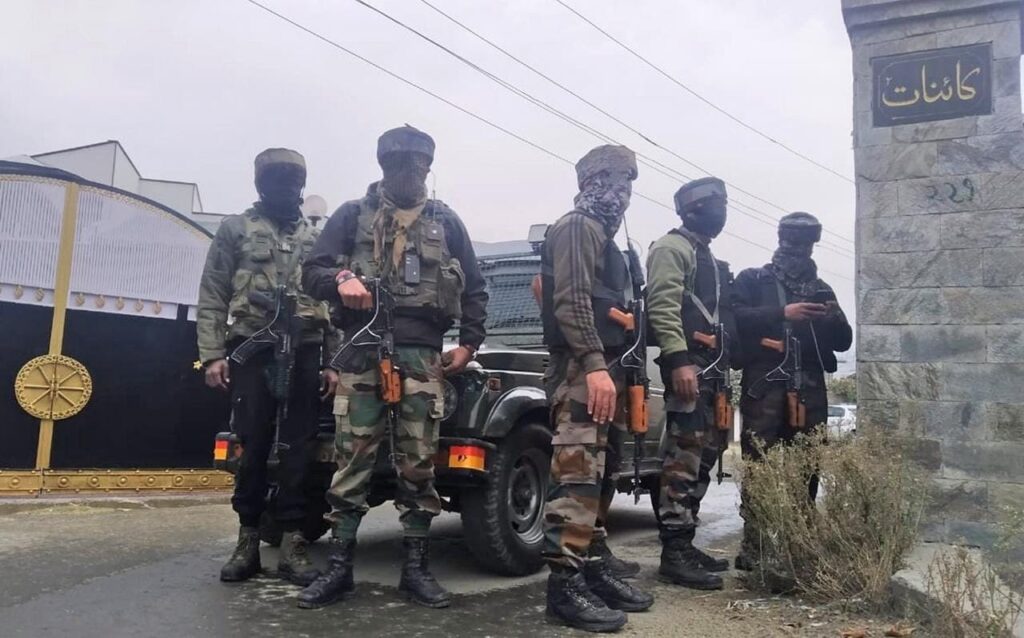
Cost Analysis of Equipping One Soldier
- Economies of Scale: The Indian Army, with 1.4 million active personnel, procures ~760,000 assault rifles, achieving cost savings through bulk orders (e.g., 72,400 SIG Sauer rifles at ₹700 crore, ~$9,600 per rifle for two tranches). Indigenous production of AK-203s and vests lowers costs compared to imports.
- Asymmetric Cost Burden: Equipping one soldier ($2,200) is costlier than a militant’s gear (estimated $500-$1,000, including basic AK-47s and explosives), reflecting the Army’s investment in advanced technology and protection.
- Lifecycle Costs: Maintenance, training, and ammunition resupply add ~$500 annually per soldier. Over a 10-year equipment lifecycle, this doubles the initial cost to ~$7,200.
- Procurement Challenges: Unrealistic Qualitative Requirements (QRs) have delayed rifle replacements (e.g., failed multi-calibre rifle tender, 2011-2015), inflating costs due to prolonged reliance on outdated INSAS rifles.
- Indigenization Efforts: Programs like Make in India (e.g., AK-203 production, Excalibur rifle development) aim to reduce import dependency, but initial setup costs (e.g., Korwa factory) are high.
- Trade-Offs: Higher costs for modern weapons (AK-203, SIG Sauer) improve lethality and reliability, critical for CI/CT operations, but divert funds from development programs like Operation Sadbhavana.
AI Innovations in CI/CT
AI is transforming India’s CI/CT strategy:
- Intelligence Analysis: AI-driven tools process petabytes of data from social media, intercepted communications, and open-source intelligence (OSINT) to identify militant networks. For example, predictive algorithms help map recruitment patterns, as seen in studies of LeT’s recruitment in Pakistan.
- Surveillance and Targeting: AI-enhanced drones and facial recognition systems improve real-time tracking, as likely used in Operation Mahadev to pinpoint militant locations.
- Cyber Countermeasures: AI combats online radicalization by identifying and removing extremist content, addressing the post-2016 surge in local recruitment via social media platforms like Facebook.
- Network Disruption: Machine learning models analyze financial transactions to disrupt hawala and narco-terrorism funding channels, critical given the estimated US$2.5 billion from Pakistan’s heroin trade supporting militancy.
- Challenges: Overreliance on AI risks missing nuanced human intelligence, and ethical concerns arise from automated decision-making in kinetic operations.
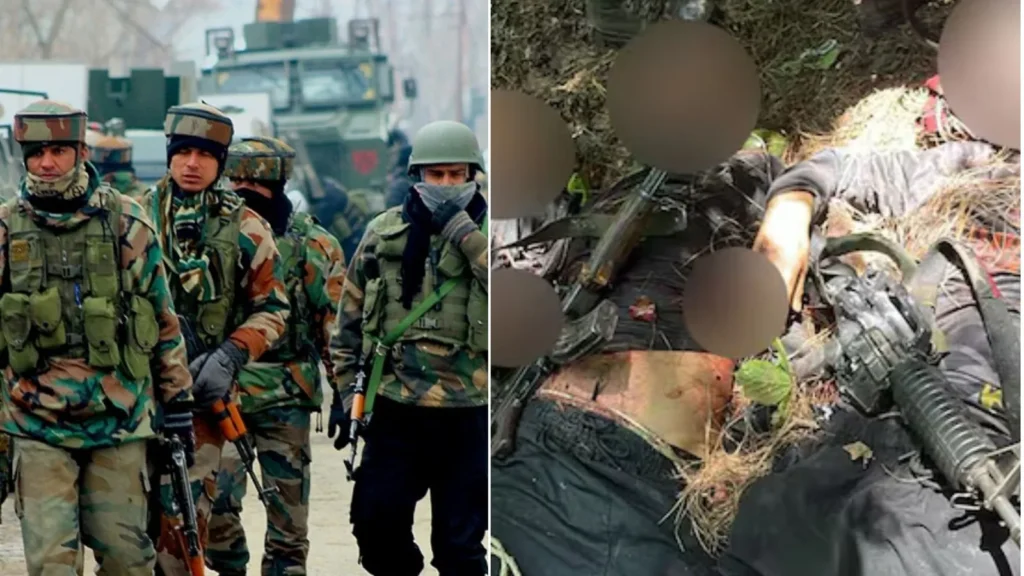
Conclusion
Operation Mahadev exemplifies India’s robust CI/CT approach, but the financial cost—US$1.46 billion annually—underscores the challenge of sustaining operations against low-cost terrorism. AI innovations enhance efficiency in surveillance, intelligence, and disruption of terror networks, but must be balanced with human-centric strategies and development to address root causes.
True success lies in breaking the cycle of violence through trust-building and socio-economic progress, ensuring long-term stability in Kashmir.

Comments